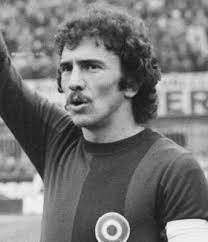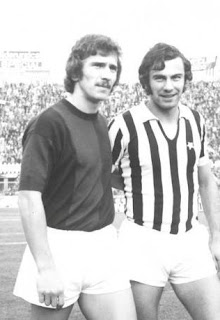Italian whose name is commemorated in an African capital
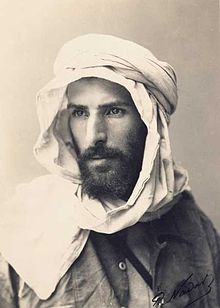 |
| De Brazza was born in Castel Gandolfo, south of Rome |
His birth name was Pietro Paolo Savorgnan di Brazzà but he became a French citizen in 1874 after obtaining sponsorship from the French government to help fund his African expeditions, and adopted a French version of his name.
Although it was because of de Brazza that much of Congo became a French colony, the transference of sovereignty took place without bloodshed and de Brazza was well liked for his friendly nature and commitment to peace. Its capital, founded in 1880, was named Brazzaville in his honour and the name was retained even after the Republic of Congo became fully independent in 1960.
De Brazza was born into a noble family, the seventh of 13 children. His father, Ascanio Savorgnan di Brazzà, was a sculptor and painter who had studied under Antonio Canova; his mother, Giacinta Simonetti, hailed from a Roman family with Venetian roots. The family also owned houses in what is now Friuli Venezia Giulia at Brazzacco and Soleschiano, near Manzano, in the province of Udine.
His interest in exploring took hold at a young age and he enrolled at the French naval academy at Brest. Upon graduation, he was sent to Algeria, already a French colony, and witnessed an uprising that was put down by the French occupiers only at the cost of many lives, after which he vowed to follow a path of peace. He also became firmly against slavery.
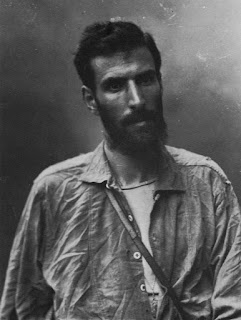 |
| In France, de Brazza became known as le conquérant pacifique |
He was away for three years, but his success in forming friendly relationships with local leaders persuaded the French to fund further expeditions, driven by a desire to make territorial gains in the area in competition notably with the Portuguese and Belgium, including one to the strategically important Congo basin.
It was there that de Brazza met King Illoh Makoko of the Bateke tribe, much of whose territory fell into the area that would become French Congo, and persuaded him to place his kingdom under the protection of the French flag. Makoko, enticed by trade possibilities, signed a treaty. He also arranged for the establishment of a French settlement at Mfoa on the Congo's Malebo Pool, the beginnings of the city that would later be called Brazzaville.
Back in France, the press hailed de Brazza as le conquérant pacifique - the peaceful conqueror - for his success in aiding French imperial expansion without the need for armed conflict.
He was made governor-general of French Congo in 1886, a popular appointment with the Bateke people, but was replaced after just over a decade in the role, largely on the basis that the territory was not generating the income for France that had been envisaged.
 |
| The De Brazza Mausoleum in Brazzaville cost $10 million |
Shortly afterwards, after leaving Brazzaville en route to Dakar in what is now Senegal, de Brazza died. The cause was officially listed as dysentery, but his wife, Thérèse, believed he was poisoned.
De Brazza was given a state funeral at Sainte-Clotilde, Paris, and he was interred at the cemetery of Père Lachaise, but Thérèse later had his body exhumed and reburied in Algiers, the capital of present-day Algeria.
A century later, the presidents of Congo, Gabon and France attended a ceremony in Brazzaville to lay the foundation stone for a memorial to de Brazza in the form of a mausoleum made from Italian marble, which would cost 10 million dollars to build. In 2006 his remains along with those of his wife and four children were exhumed in Algiers, to be reinterred in Brazzaville.
Officially, he was regarded as one of the founding fathers of the Republic of Congo but the move to erect a permanent monument was not universally popular, with some Congolese adamant that honours should never be bestowed on a coloniser, regardless of the circumstances.
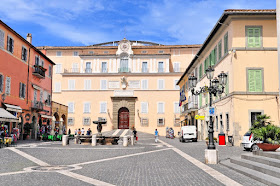 |
| The Apostolic Palace in Castel Gandolfo was officially the pope's summer residence |
Castel Gandolfo, where de Brazza was born, overlooks Lake Albano from a wonderful position in the hills south of Rome. It falls within the regional park of Castelli Romani, which has many places of historic and artistic interest to visit. Castel Gandolfo was part of the Papal States until Italian unification was completed in 1870 and it’s Apostolic Palace remained the official papal summer residence even after the town became part of Lazio. Indeed, the palace is still the property of the Holy See and is policed by the Swiss Guard.
 |
| Some ruins of the original castle still remain within the estate |
Brazzacco, which can be found about 11km (7 miles) northeast of the city of Udine, is home to the Castello di Brazzà, a villa and estate that has belonged to the Savorgnan family since the 11th or 12th centuries. The estate contains the remains of a 10th century castle. The villa was commandeered for military purposes in both the First World War, when it was the headquarters for the Austrian army, under whose charge it was badly damaged by a fire in 1917, and in the Second World War, when it was occupied first by Nazi forces and then by the Allies before finally the residence of the commander of the Italian troops in the area. Nowadays, rooms in the villa are available to visitors in the summer months, while a museum on the estate contains an exhibition of African artefacts.
Also on this day:
1348: An earthquake hits the region of Friuli Venezia Giulia
1755: The birth of physician Paolo Mascagni
1866: The birth of operatic baritone Antonio Scotti
1982: The birth of singer-songwriter Noemi



















